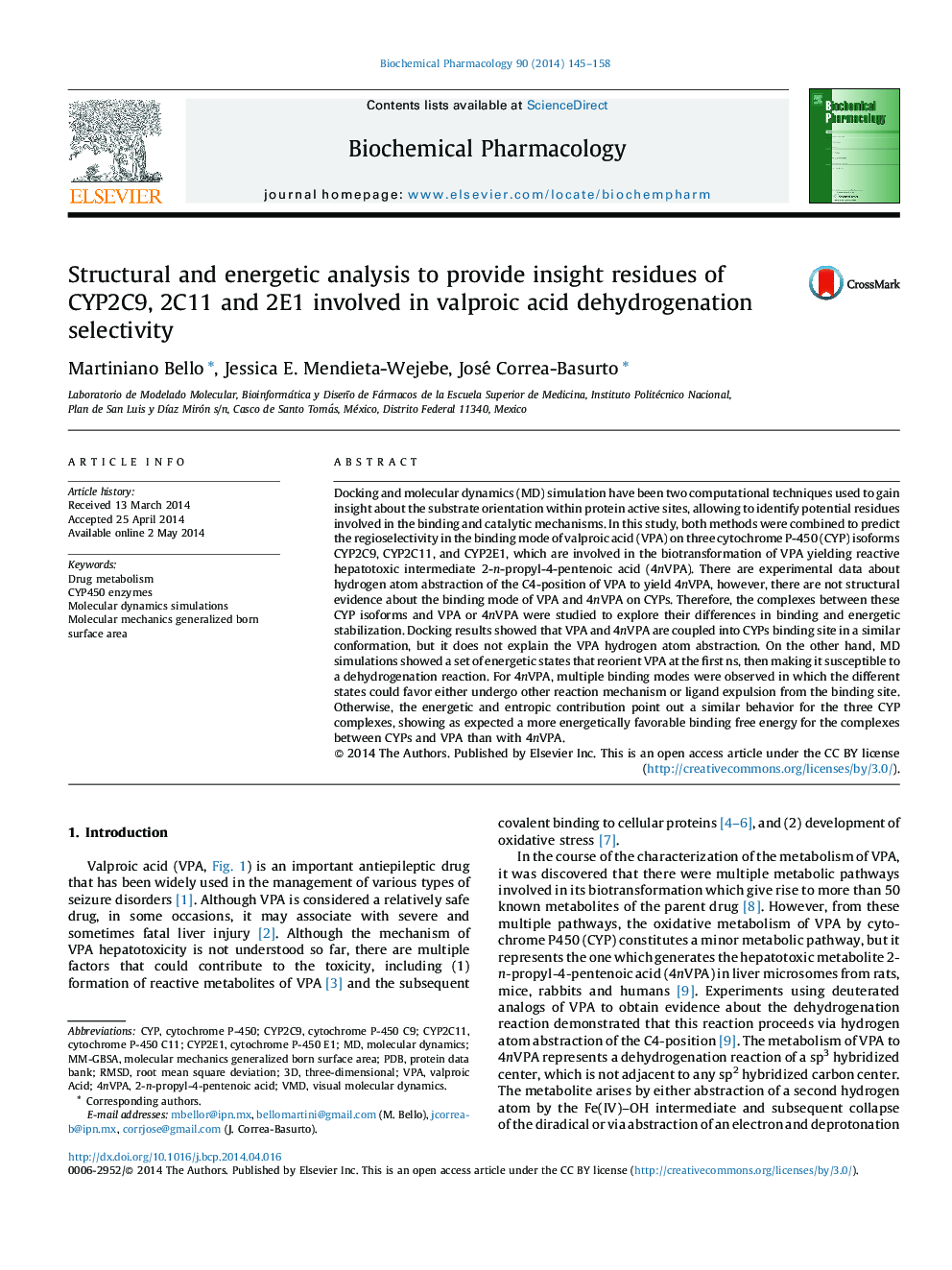| کد مقاله | کد نشریه | سال انتشار | مقاله انگلیسی | نسخه تمام متن |
|---|---|---|---|---|
| 5823553 | 1118341 | 2014 | 14 صفحه PDF | دانلود رایگان |

Docking and molecular dynamics (MD) simulation have been two computational techniques used to gain insight about the substrate orientation within protein active sites, allowing to identify potential residues involved in the binding and catalytic mechanisms. In this study, both methods were combined to predict the regioselectivity in the binding mode of valproic acid (VPA) on three cytochrome P-450 (CYP) isoforms CYP2C9, CYP2C11, and CYP2E1, which are involved in the biotransformation of VPA yielding reactive hepatotoxic intermediate 2-n-propyl-4-pentenoic acid (4nVPA). There are experimental data about hydrogen atom abstraction of the C4-position of VPA to yield 4nVPA, however, there are not structural evidence about the binding mode of VPA and 4nVPA on CYPs. Therefore, the complexes between these CYP isoforms and VPA or 4nVPA were studied to explore their differences in binding and energetic stabilization. Docking results showed that VPA and 4nVPA are coupled into CYPs binding site in a similar conformation, but it does not explain the VPA hydrogen atom abstraction. On the other hand, MD simulations showed a set of energetic states that reorient VPA at the first ns, then making it susceptible to a dehydrogenation reaction. For 4nVPA, multiple binding modes were observed in which the different states could favor either undergo other reaction mechanism or ligand expulsion from the binding site. Otherwise, the energetic and entropic contribution point out a similar behavior for the three CYP complexes, showing as expected a more energetically favorable binding free energy for the complexes between CYPs and VPA than with 4nVPA.
Dehydrogenation of VPA at the γ-carbon by CYP2C9 results in the formation of 4nVPA, which can act as a free-radical.
Journal: Biochemical Pharmacology - Volume 90, Issue 2, 15 July 2014, Pages 145-158